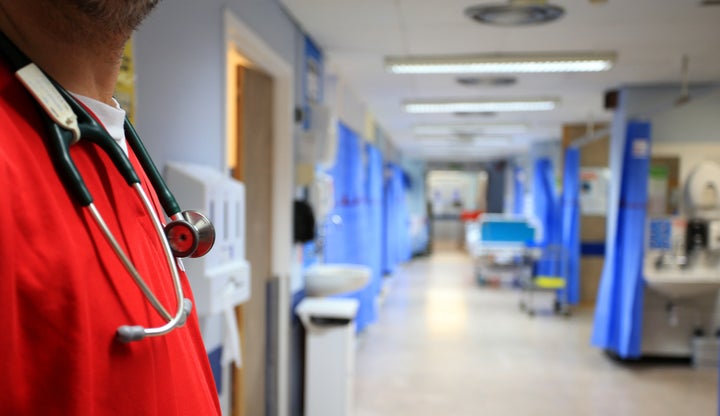
Patients have been waiting up to three days in the corridors of A&E with the hope to be seen by a doctor – but just what is causing this delay?
Journalist Paul Brand brought the reality of NHS struggles to the surface in a documentary which aired on ITV’s Tonight programme on Wednesday.
He spoke to May, a 92-year-old patient who had been waiting for three days to be seen by a doctor and her daughter.
Her daughter said she thought never “in a million years” would her mum have to wait this long in A&E. Another patient, Hugh, was waiting 15 hours to be seen by doctors even as he had water around his lungs and heart.
He said: “They’re doing their best, bless them.”
What’s the root cause of hospital delays?
There are myriad factors playing into the struggles of the NHS right now.
Unprecedented staffing shortages, strict budgets and the largest waiting list for treatment on record – with more than 6.6 million people on it as of May – are all taking a toll on the health service, alongside the ongoing pressures from the pandemic.
Staffing
According to a recent report from MPs, the NHS is currently short of 12,000 doctors and over 50,000 nurses and midwives.
And the staffing crisis goes far beyond A&E departments. Waiting times for ambulances have also hit record highs due to paramedics being held up for hours at a time waiting to hand patients over to A&E staff.
One Twitter user, a former NHS staff member, responded to Brand’s video by revealing her own difficulties with the health service.
She said: “I left last year, as did many others. The underfunding, Tory corruption and privatisation, Brexit, pandemic and cost of living crisis meant many of us were working all the hours god sent and couldn’t pay our bills and were burnt out.”
Others shared a snapshot of current pressures, pointing the finger at what they see as inaction from the government.
Budgets
The restraints on spending for the NHS are contributing to the exceptional waiting times as there aren’t enough beds available for patients.
According to the British Medical Association, there is a funding gap of £50.1bn if the NHS spending was to keep in line with annual 4.3% growth.
This leaves the NHS having to play catch up to try and fill the spending gap.
Impact of Covid
Health experts predicted that 2022 was the year the NHS should have been in “full speed recovery”, according to a joint editorial by the editors-in-chief of the British Medical Journal and the Health Services Journal.
But because the NHS is still recovering from the effects of the pandemic, the current picture couldn’t be anymore different, they wrote in the BMJ.
“The nation’s attempt to ‘live with Covid’ is the straw that is breaking the NHS’ back,” the authors said. “The constant pressure created by repeated Covid waves is the main reason that the NHS is nowhere near reaching the activity levels needed to begin to recover performance.”
To help combat the surge of hospital admissions, the NHS diverted large areas of their resources to help care for those who contracted Covid-19.
However, as a result of the pandemic the waiting list has built up to record numbers.
There are currently over 330,000 waiting over a year for their treatments through the NHS. For cancer treatments, this has had a devastating impact on the time people are waiting for their first round of treatment after their GP referral.
As of April, only 65% of patients were able to get treatment within the first two months – 25% down on the health service’s target of 90%.
